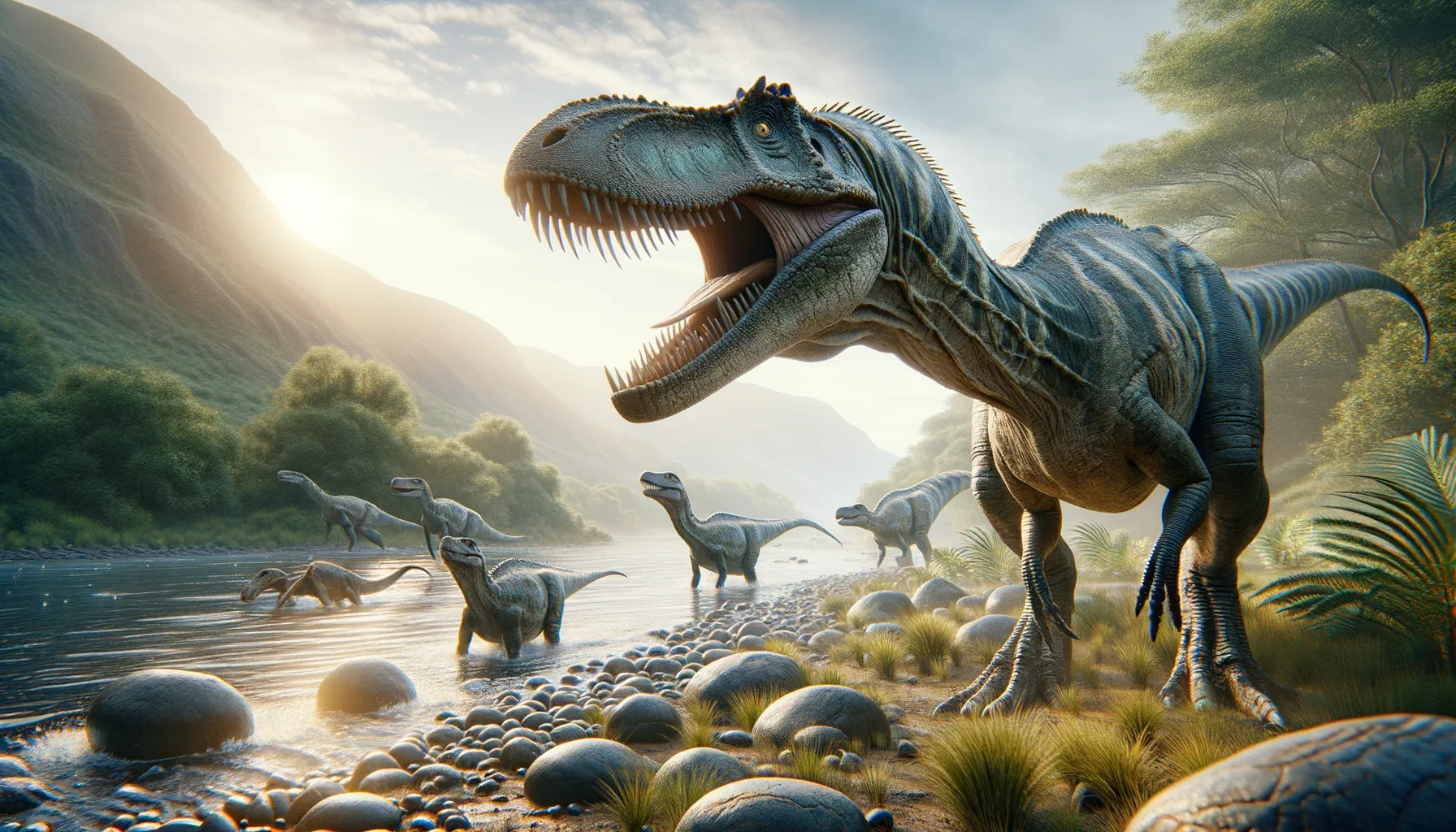
Suchomimus
Crocodile snout, fish-hunting might!
Period
Cretaceous
Length
Approximately 11 meters from snout to tail.
Height
Approximately 3 to 4 meters at the hip.
Weight
Around 2.5 to 3 tons.
Suchomimus was a large theropod dinosaur known for its crocodile-like snout and numerous conical teeth, characteristics that hint at its piscivorous (fish-eating) diet. This dinosaur roamed the earth during the early Cretaceous period, around 112 million years ago. It shared some similarities with the better-known Spinosaurus and likely inhabited floodplains and river environments, using its long arms tipped with large claws to capture prey.
Diet
Suchomimus primarily consumed fish, as indicated by its crocodile-like snout and conical teeth ideal for catching slippery fish. It may have occasionally consumed other small prey or carrion, but its adaptation to a piscivorous diet was significant.
Hunting
It likely hunted by wading through shallow waters, using its elongated snout and sharp teeth to snatch fish. Its strong arms and large claws may have been used to hook or grasp slippery fish from the water.
Environmental challenges
Living in floodplain environments, Suchomimus would have faced challenges such as seasonal changes in water levels, which might have affected the availability of fish. It also needed to compete with other predators for food sources. Periodic droughts or climate changes could also impact its habitat and resources, forcing it to adapt or migrate to more suitable areas.
Speed
Moderate; could run on two legs.
Lifespan
Approximately 30 to 50 years in the wild.
First discovery
First discovered in Niger in 1997 by Paul Sereno.
Fun Facts
- Suchomimus was a large dinosaur that primarily ate fish, much like a modern crocodile.
- It had a long, narrow snout filled with pointed teeth, perfect for catching slippery prey.
- Suchomimus lived during the Early Cretaceous period, around 112 million years ago.
- Fossils of Suchomimus were discovered in the Sahara Desert in Niger, Africa.
- Its name means 'crocodile mimic' due to its similarities with today's crocodiles.
- Suchomimus is estimated to have been over 11 meters long, roughly the size of a bus.
- Unlike many other theropods, Suchomimus had large, powerful arms and claws for hunting.
Growth and Development
Suchomimus experienced rapid growth during its early years, similar to other theropods, to reach a formidable size that reduced predation risks. Juvenile Suchomimus might have had different dietary habits compared to adults, focusing on smaller, more abundant prey until they matured. Developing its characteristic crocodile-like features would have been crucial in establishing its niche as a piscivore.
Habitat
Suchomimus lived in environments with water access, such as riverbanks and floodplains, where fish populations were abundant. These areas were lush and likely supported diverse ecosystems, providing additional food opportunities. It might have also moved along river systems, following the seasonal migration patterns of fish and other aquatic life.
Interaction with other species
Suchomimus shared its habitat with various other dinosaur species, both herbivores and carnivores. These interactions could include competition for territory and resources. It may have formed symbiotic relationships with species that didn't compete for the same diet, while occasional interactions with predators likely involved territorial displays or conflicts.
Natural lifespan
Its natural lifespan was likely around 30 to 50 years, depending on environmental factors and predation.
Reproduction
Like many theropods, Suchomimus likely laid eggs in nests, possibly near water sources to protect them from predators. Juveniles may have been cared for by the adults for a short period or left to fend for themselves after hatching. Clutch sizes are unknown, but similar species often laid multiple eggs at a time.
Social behaviour
Suchomimus may have lived solitary lives, only coming together to mate or possibly during migrations. Its social behaviors remain speculative, though it might have exhibited territorial behaviors to establish fish-rich hunting grounds. Some evidence suggests occasional gregarious behavior, perhaps during hunting or nesting periods.
Fossil locations
Fossils of Suchomimus have been primarily found in the Tenere Desert of Niger, providing evidence of its range in what would have been lush, riverine environments. Its geographic location overlaps with other similar theropods in Africa, indicating a diverse, predator-rich ecosystem. The finds in these areas highlight the significance of the Sahara region in paleontological discoveries during the Cretaceous period.
